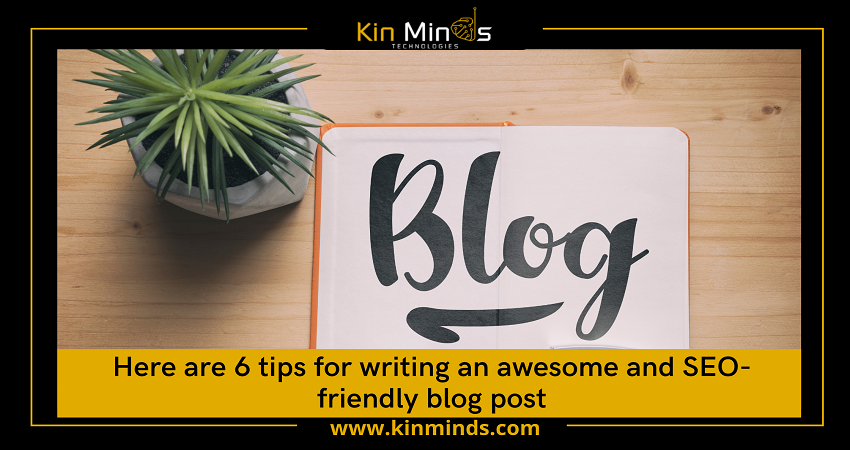Writing for SEO and writing to attract and captivate your audience may seem contradictory to some writers. My opinion differs. An SEO-friendly blog post has the words you want to appear prominently. Overusing keywords can impede your text’s readability. Including keywords in your texts can also signal to Google that you’re stuffing them in.
You can use these tips to write readable and SEO Optimized Content posts. Writing in understandable language gets you more visitors and keeps them on your site, and we believe the two goals can go hand in hand.
Here are 6 tips to help you write an awesome blog post!
Tips for writing SEO-friendly blog posts
Writing a good blog post is the most important thing. Most bloggers simply start writing a new blog post, typing whatever comes to mind. Others may need assistance if they do not have natural writing abilities. Writing a new blog always involves following these ‘rules’.
- Before you write, think!
Consider your piece’s message carefully before you begin. Which central question or message do you want to convey to your readers? Why are you writing this article? Lastly, what do you want your readers to do? Consider the search intent someone may have as you answer these questions. Search results for the term you are trying to rank for will give you an idea of what this means.
- Make a structure for your post
Writing an SEO-friendly and readable blog post requires a clear structure. Posts should include:
- Introduce your topic;
- Message body;
- Your conclusion.
Summarize all three sections. Here is the summary of the post. It will make your blog posts more readable and well-structured.
Read More – A Company That Provides Premium Website Content Writing Services
- Utilize paragraphs and headings
Most people use paragraphs, but not everyone uses them effectively. Creating new lines for each new sentence doesn’t look good. Do not make each paragraph too long since each should have its idea or topic. Each paragraph should have a main idea. In one sentence, sum up that main idea. Use more paragraphs if only a few sentences explain the idea.
Proper headings can also make your readers more intuitive. Use subheadings to organize your articles. You can categorize your articles using subheadings. Readability and SEO go hand in hand. Include your keyword in subheadings as well.
- It is important to have transitions
In your text, transition words help people understand the relationship between sentences and paragraphs. Let’s say there are three reasons why people buy your product. As a first step, you should use a signal word, such as ‘first’, ‘secondly’, and ‘finally’. Additionally, words like ‘however’, ‘similarly’, and ‘for example provide clear signals to your readers. When words like ‘to summarize’ or ‘in short’ follow, readers know a conclusion will follow. Your text needs transition words to add structure.
- Share your post with others
Make sure you let someone else read your post before publishing it. Ensure they understand your main concept and invite them to correct typos and grammatical errors. It provides an objective view of your text’s readability and attractiveness. Consider running your post past someone on your team who is an expert on the topic you are writing about. So they can make suggestions to improve your post and ensure that you cover everything.
- Add content regularly
You can tell Google that your website is alive by regularly adding blog posts. You might suffer a drop in ranking if your site is not active. Don’t post just for the sake of posting. Keep your articles informative, well-written, and relevant to readers’ queries.
Blog editorial calendars are great if you have trouble posting regularly. It allows you and your team to structure this process according to your needs. To avoid your old blog posts becoming stale, update them regularly.
For more information about Digital marketing services and SEO Agency, keywords and keywords, visit the website link – https://kinminds.com/




